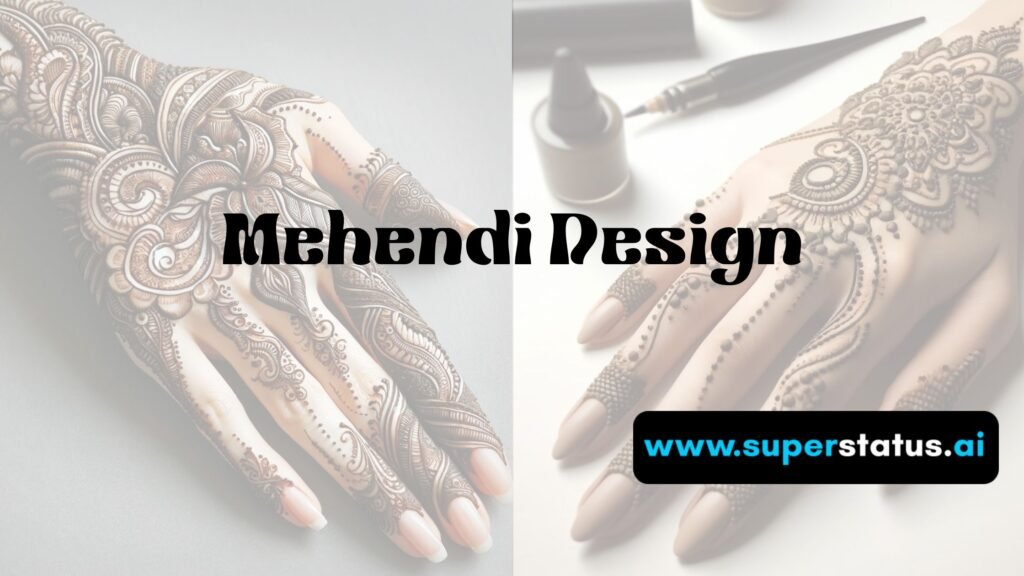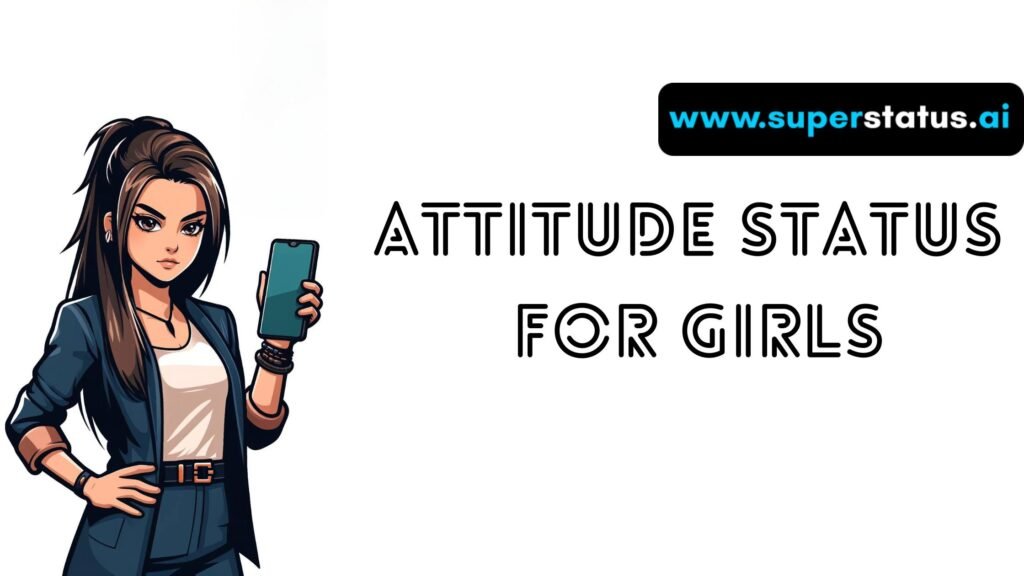Mehendi design is a timeless art form that has adorned hands and feet for centuries. From traditional weddings to modern festivals, mehendi holds a special place in celebrations across cultures. In this blog, we will explore the beauty of mehendi design, popular trends, and tips to help you create stunning patterns. Whether you’re a beginner or an expert, there’s something here for everyone.
Mehendi, an ancient form of body art that has been practiced for over 5000 years in Pakistan, India, Africa and the Middle East, is more than just a temporary tattoo. It’s a vital part of the celebrations, adding to the beauty and cultural essence of the ceremonies.
The History and Cultural Significance of Mehendi
Mehendi, also known as henna, has its roots in ancient Egypt. It was initially used for its cooling properties in the desert climate. Over time, people started using it for its dyeing effects, which led to its use in body art and hair coloring. In Indian culture, Mehendi is considered auspicious and is used in almost every celebration, be it a wedding, festival, or birth of a baby.
Understanding the Basics of Mehendi Design
Mehendi designs are usually made up of basic shapes like dots, lines, squares, and circles. These shapes are combined in various ways to create intricate patterns. The most commonly used symbols in Mehendi designs are peacocks, flowers, leaves, and vines.
Popular Mehendi Design Styles
There are several styles of Mehendi designs, each unique in its own way:
- Indian Mehendi Design: This style is characterized by big, bold floral patterns covering the hands and feet.
- Arabic Mehandi Design: Unlike Indian Mehendi, Arabic designs are less complex and use more open spaces.
- Moroccan Mehendi Design : Moroccan designs are geometric and do not usually represent animals or flowers.
- Contemporary Mehendi Design: This style is a fusion of traditional and modern designs, often incorporating elements from different cultures.
Popular Mehendi Design Trends
1. Floral Patterns
Floral patterns are timeless and versatile, suitable for any occasion. They can range from simple blooms to intricate arrangements that cover the entire hand.
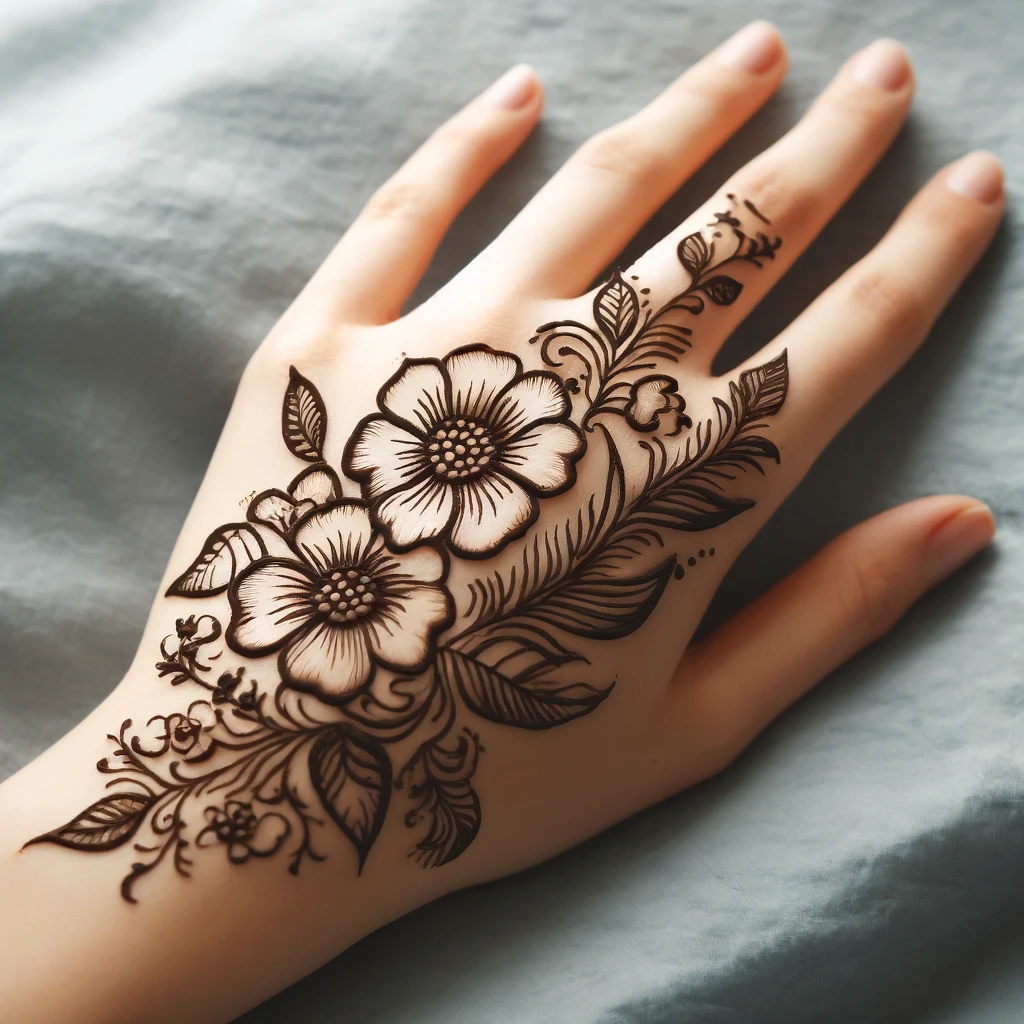
2. Geometric Shapes
For a modern twist, geometric shapes such as triangles, squares, and diamonds create a clean and stylish look. These patterns are perfect for those who prefer a contemporary style.
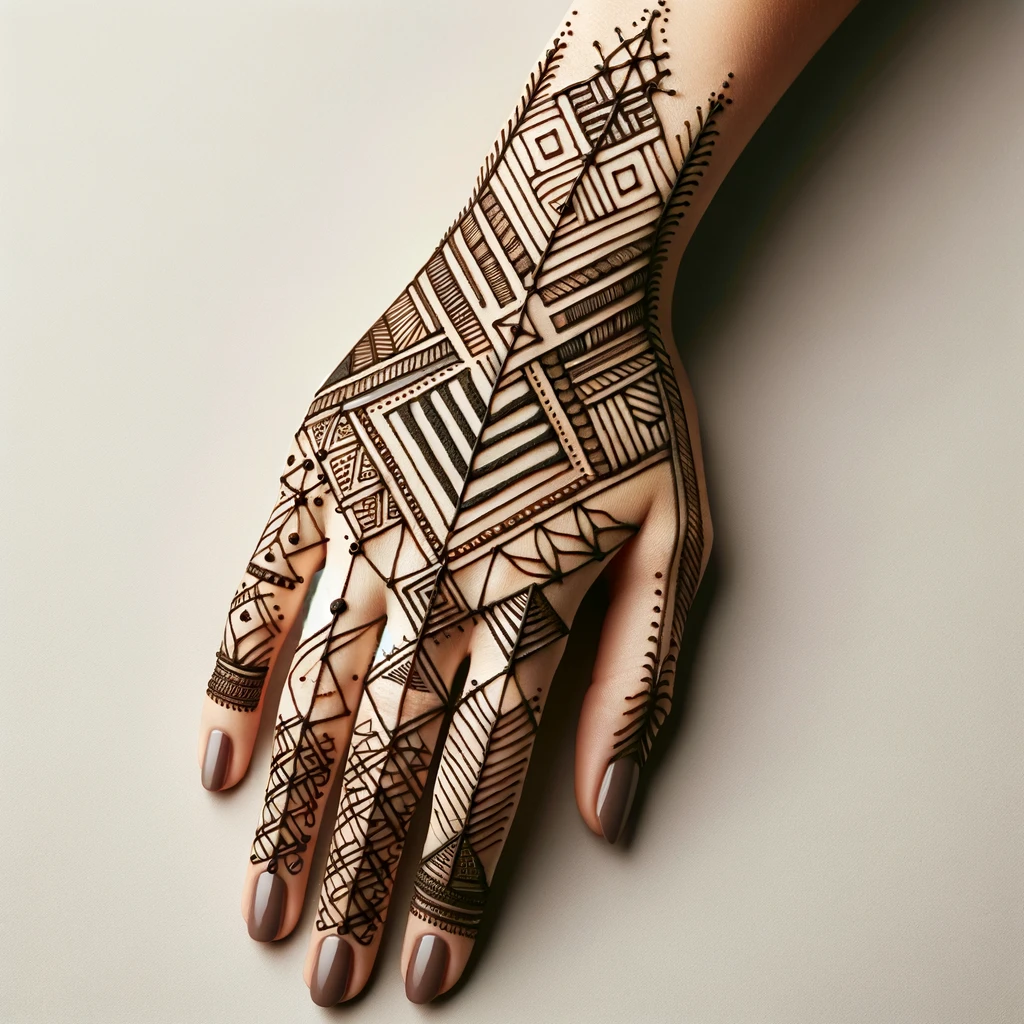
3. Arabic Mehendi
Arabic mehendi designs are characterized by bold lines and spaced-out patterns. They often feature floral motifs and flowing lines, making them ideal for quick and elegant designs.
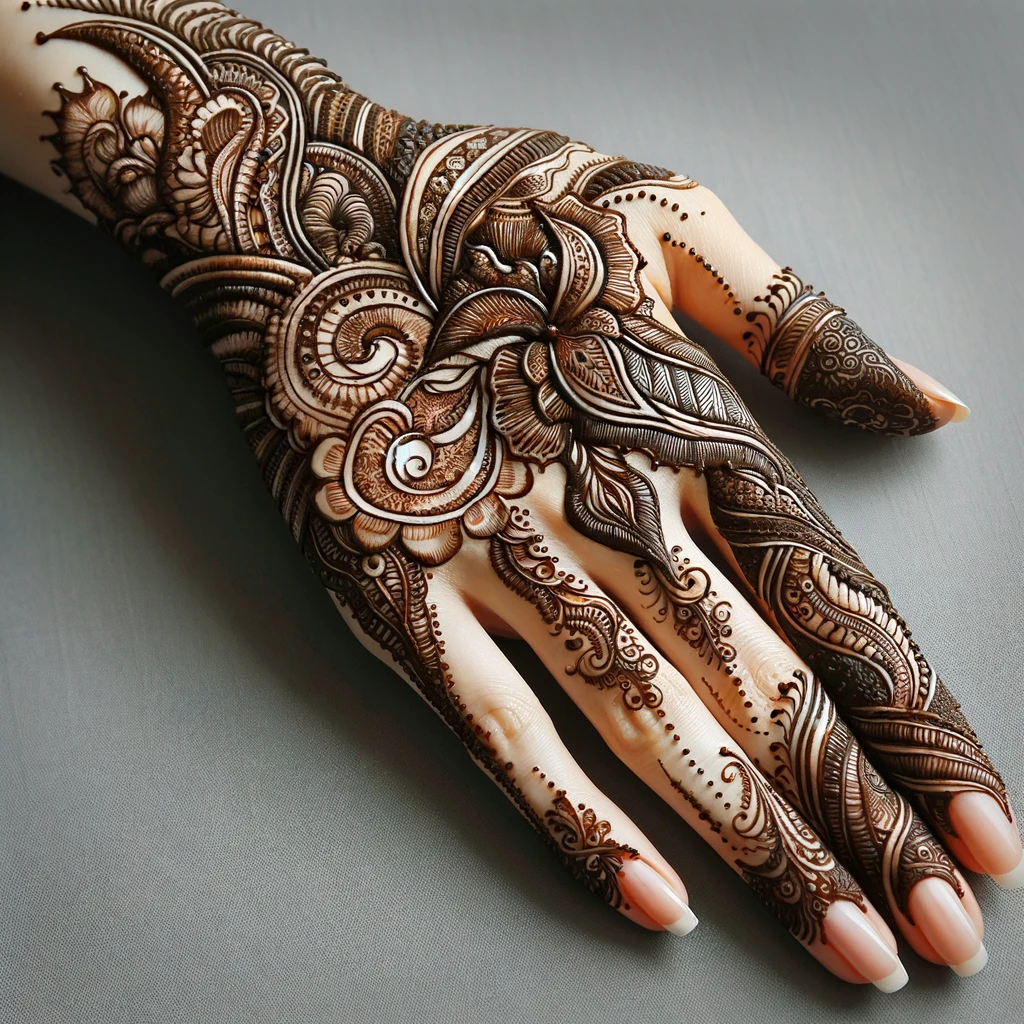
4. Bridal Mehendi
Bridal mehendi is known for its density and complexity. These designs often cover the entire hand and forearm with elaborate motifs such as paisleys, peacocks, and intricate floral patterns.
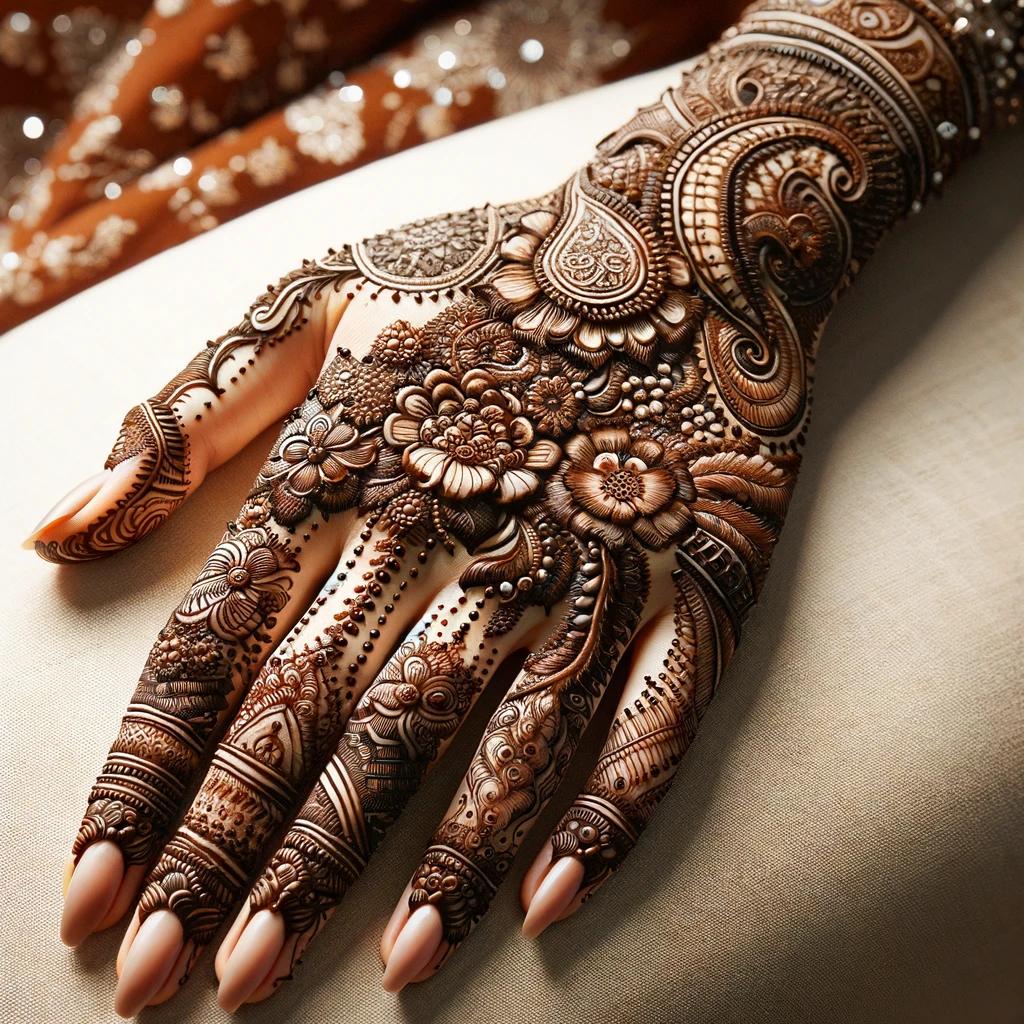
5. Mandala Designs
Mandala designs feature symmetrical, circular patterns that radiate from the center. They are not only visually appealing but also carry spiritual significance, representing unity and harmony.
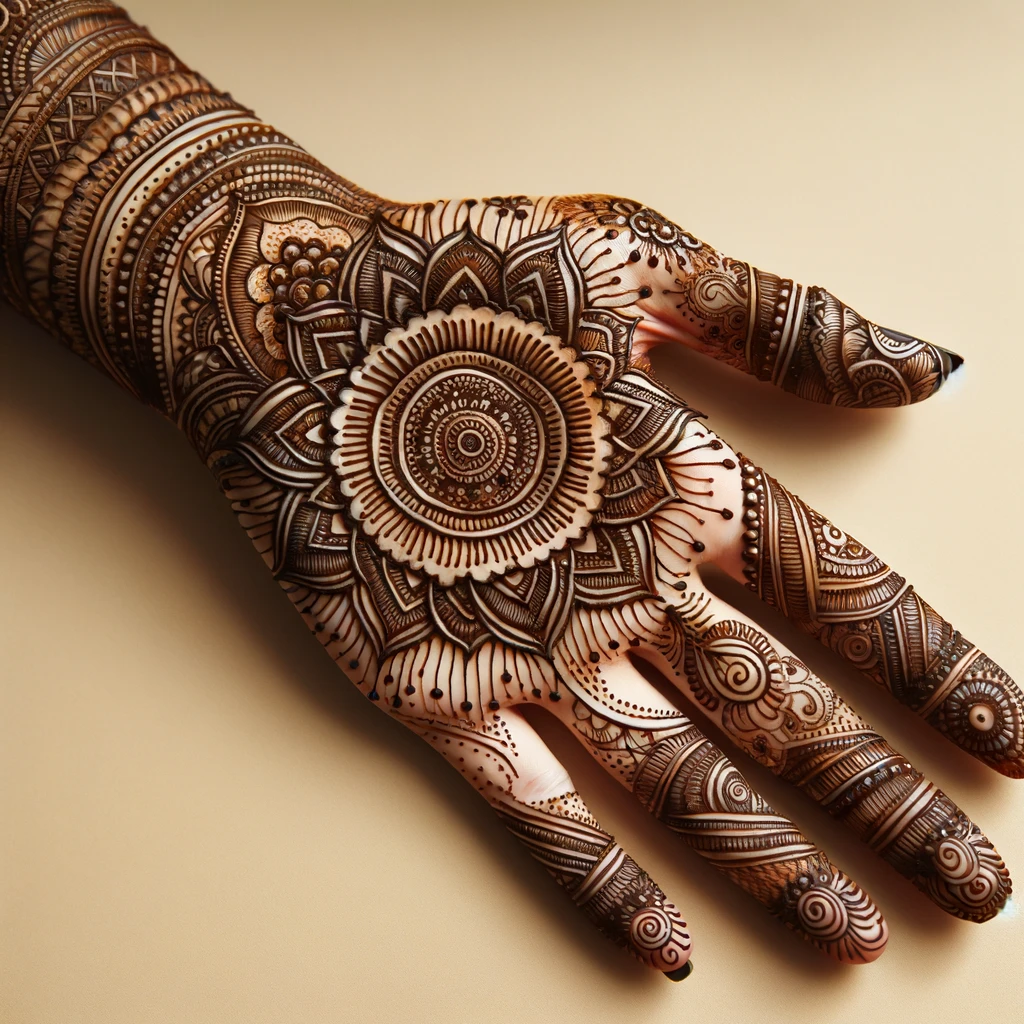
Step-by-Step Guide to Creating Your Own Mehendi Design
Creating your own Mehendi design can be a fun and rewarding experience. Here’s a step-by-step guide:
- Choose Your Design: Start by choosing a design. You can draw inspiration from traditional designs or create something completely unique.
- Prepare Your Skin: Clean the area where you will apply the Mehendi to remove any oils or lotions.
- Prepare the Mehendi Paste: Mix henna powder with water to create a thick paste.
- Apply the Mehendi: Use a Mehendi cone to apply the design. Start from the center and work your way outwards.
- Let it Dry: Allow the Mehendi to dry completely. This can take several hours.
- Remove the Mehendi: Once dry, gently scrape off the Mehendi. Avoid washing the area for at least 24 hours to allow the color to develop.
Tips and Tricks for Perfect Mehendi Design
Here are some tips and tricks for perfect Mehendi design:
- Practice Makes Perfect: Practice your designs on paper before applying them to skin.
- Use Fresh Henna: Fresh henna gives the best color.
- Aftercare is Important: Avoid contact with water for at least 24 hours after applying the Mehendi.
The Future of Mehendi Design
The future of Mehendi design is exciting. With the advent of colored henna and the incorporation of gemstones and glitter, Mehendi design is becoming more innovative and creative.
Do you have Telegram?
Don’t you have Telegram?
FAQs about Mehendi Design
How long does mehendi design last?
Mehendi designs typically lasts 1 to 3 weeks, depending on the quality of the henna and how well you care for it.
Is mehendi safe for sensitive skin?
Natural henna is generally safe, but it’s always best to do a patch test to check for any allergic reactions.
How can I make my mehendi darker?
To darken the stain, leave the mehendi on for a longer time and apply a mixture of lemon juice and sugar to the design. Avoid water for at least 24 hours after application.
What occasions are best for mehendi?
Mehendi is perfect for weddings, festivals like Diwali and Eid, baby showers, and any celebration where you want to add a festive touch.
Can I create my own mehendi designs?
Yes, with practice and creativity, you can create unique mehendi designs. Start with simple patterns and gradually move to more complex designs.
Can I create my own Mehendi design?
Absolutely! With practice, anyone can create beautiful Mehendi designs.
